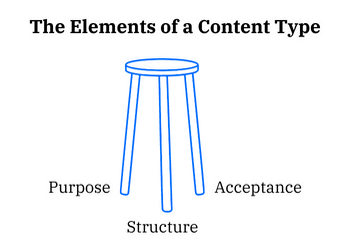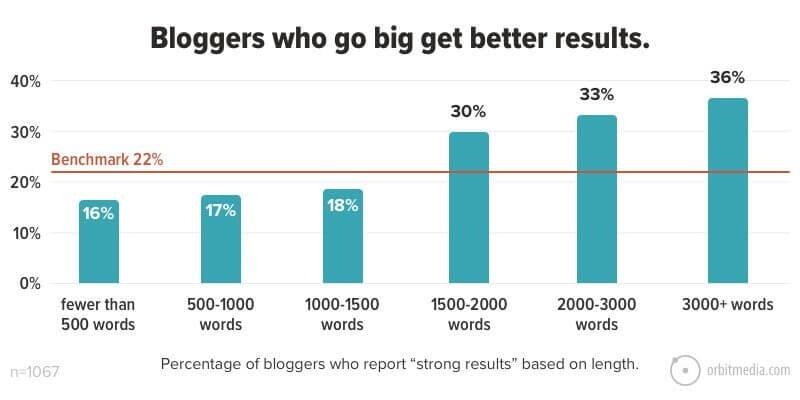Is your organization a one-trick pony when it comes to content creation? In other words, do you stick to just one or two kinds of content? Sure, having a specialty is beneficial and paves the way for a higher quality of content.
However, there is also value in varying the types of content you produce. Let's discuss what content types to choose from, how you can use them, and the benefits of using them.
What are the different content types?
Here's a non-exhaustive list of the most common content types:
- Blog posts
- Emails
- Social media content
- Guides
- Ebooks
- Video content
- Webinars
- Case studies
- White papers
- Press releases
There’s no shortage of ways to succeed in content marketing, especially when you consider that there are more than 100 types of content in total (including infographics, landing pages, tutorials, podcasts, and more).
What do all these content types have in common? They each serve a purpose, follow a particular structure, and are accepted by the community that consumes them.
For instance, think about case studies:
- Their purpose is to document the process or events surrounding a certain "case" as it develops over time, such as the story of before and after the adoption of new software.
- They have an expected structure that includes case descriptions, goals, steps taken toward those goals, and results.
- They’re accepted within the B2B community, for example.
 The three elements of content types: Purpose, structure, and social acceptance
The three elements of content types: Purpose, structure, and social acceptance
Similarly, we can understand other forms of content by looking at their three "legs":
- Purpose: Different forms of content bring goals to life. For example, the BBC aims to inform, educate, and entertain. Their content types, such as news, commentaries, and documentaries, bring their purpose to life.
- Structure: The structure of a piece of content serves two purposes: 1) it helps audiences know what to expect, and 2) it helps organizations reuse aspects of attributes of the structure in new ways. Think, for example, of a statistical chart from a white paper that’s reused in a blog post.
- Social acceptance: Content types help build a community. For instance, Buzzfeed’s catchy, gossipy content has a loyal following.
Why are content types important?
The benefits of incorporating different kinds of content into your content marketing strategy are many. Consider three of the most significant advantages.
1. Content types help with scaling
Content creation becomes much easier and faster when you have a variety of content to create, reusable structures for content, and repeatable processes that make scaling easier.
For example, say you have a template that works well for case studies and a related workflow that your team uses often. You’d likely be able to write more in less time. And you could even delegate or outsource that work at scale without sacrificing content quality.
2. Content types benefit your audience
Not everyone in your audience consumes content in the same way. Some prefer written content over video content, and others have the opposite preference.
Similarly, not everyone can be reached via the same channels. For instance, some may only be occasional social media users. So, if you were to only focus on creating social media content, you'd be missing out on opportunities to connect with them.
The takeaway?
Embracing different types of content marketing allows you to reach and meet the needs of a larger percentage of your audience.
This translates directly into better business outcomes.
3. Content types help with audience research
Of course, not every type of content you experiment with will be a success. Plus, audience preferences and behaviors can change over time. So, how your audience does or doesn't react to your content can give you valuable data to improve your content marketing strategy.
How to use different types of content
Now let's see how each content type can be used to increase brand awareness, drive website traffic, generate leads, or accomplish other goals.
1. Blog posts
Blog posts are one of the most popular forms of content—and for a good reason. Consistently publishing high-quality blog posts can attract quality traffic to your website, position you as an authority, and nurture site visitors over time. Especially if you have a strong SEO strategy that includes:
- Choosing relevant keywords that you stand a good chance of ranking for to drive traffic from search engines
- Developing a good internal link structure to keep visitors on-site and increase chances that they'll become leads
- Building backlinks to drive traffic and boost the authority of your website and organization
While blogging was previously used mainly for top-of-the-funnel efforts, more and more organizations are using it for other parts of the funnel. Think product-led content, for example.
2. Emails
Email is another prevalent content type known to earn marketers outstanding returns. One benefit of email marketing is its versatility. For example, you can:
- Create newsletters to share your latest content with subscribers that are still at relatively early stages in the customer journey
- Share middle of the funnel content such as webinars with prospects
- Send sales emails to convert prospects into customers
3. Social media content
Next, up there's social media content. There are billions of daily active users on Facebook, LinkedIn, Instagram, and other platforms. It's safe to say that most target audiences—yours included—can be found on one social network or another. So figure out:
- Which social platform your audience spends the most time on
- What the best posting times and schedule are
- What content types get the most engagement (e.g., videos or text, humorous content of informative content, etc.)
And be sure to link your social posts to a content marketing goal, such as driving traffic to your blog or main web pages.
4. Guides
Guides—informative long-form blog posts covering a topic comprehensively—are becoming increasingly popular. Blog posts have gotten consistently longer over the years, landing at an average of 1,416 words in 2021. And research shows that such long-form content can get better results.
 Research from Orbit Media shows the correlation between results and content length
Research from Orbit Media shows the correlation between results and content length
Consider creating guides (in-depth content pillars) for your organization’s main areas of focus. Then, link content on related subtopics back to those main guides.
This will help site visitors find the info they're looking for, build your site’s topical authority, and help you rank better in search engines if you’re doing SEO.
5. Ebooks
Instead of an in-depth blog post-based guide, many content marketers create ebooks. Ebooks could be a good option if your content falls into one or more of these buckets:
- It's exceptionally long
- It would create poor UX to make readers scroll endlessly
- It contains original research or other differentiators that you can gate in exchange for an email address or even payment
Not only can the depth of ebooks position you as a trustworthy authority within your industry, but also gating them makes future lead nurturing possible.
6. Video content
Next up is the versatile media type that is video content. It can be used in blog posts, emails, and social media content, to name a handful. Not to mention that it can serve many purposes, including audience education, demoing products, and making sales.
In fact, in 2021, 87% of video marketers claimed that video gets a good return on investment. The positive results they've seen include everything from increasing time on page and generating leads to reducing support calls and increasing sales.
7. Webinars
Like video content, webinars can also get a great ROI. For example, while primarily informational, they're often tailored to individuals in later stages of the content marketing funnel and, therefore, meant to drive conversions.
So, for example, many software companies use webinars to:
- Give pro tips on the processes their software is designed to simplify
- Explain the benefits and use cases of the software
- Offer an incentive to try it
A similar strategy could work for you.
8. Case studies
Case studies, like testimonials, are great for gaining the trust of future customers or supporters. After all, their purpose is to explain how you've helped members of your target audience reach their goals.
Because this type of content is specific to your company and the products or services you offer, it should be tailored for individuals in the mid to bottom-of-the-funnel stage.
And the more similarities there are between them and the subject of your case study, the better.
9. White papers
White papers are information-packed reports designed to offer intelligent, research-backed solutions to audience problems. They provide an excellent opportunity to showcase original research and establish your company as a thought leader with fresh perspectives on the industry.
The key to an excellent white paper? Conduct in-depth, careful research to substantiate all claims and create value on top of the already-public information on your topic (instead of rehashing it).
10. Press releases
Last but not least, press releases inform the media and general public about your company-related announcements such as new product launches, upcoming events, and so on. They essentially get you free publicity, generating buzz around your organization, increasing brand awareness through word-of-mouth, and even earning you backlinks.
That is, as long as you:
- Choose topics relevant to your audience
- Cover the who, what, when, where, why, and how of whatever update you're sharing
- Give the media and other readers something worth talking about, such as thought-provoking quotes or findings from research
Incorporate different kinds of content into your digital marketing strategy
Content types are the building blocks of a sound content strategy.
Along with an editorial strategy and content workflows, they help organizations better manage their communications, scale content creation, and, most importantly, serve their audience's needs.
Bynder’s Content Workflow aids in accomplishing those goals, allowing teams to systemize content creation requirements and processes for review, approval, and governance. If you haven’t already, start your free 14-day trial and create a template for one of your most-used content types!










